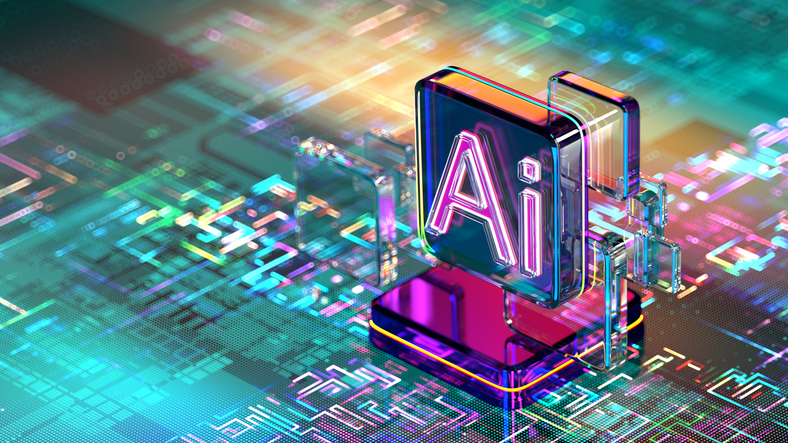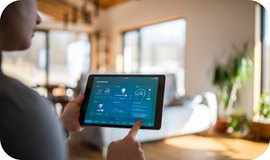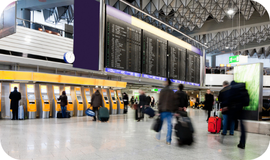Intelligent video surveillance: how AI technologies are changing security
In recent years, Artificial Intelligence (AI) has gotten into all areas of our lives, and video surveillance is no exception. Traditional video surveillance systems that simply recorded images from a camera and stored them are stepping aside and giving the wall to smart technologies that can analyze, predict, and make decisions. AI does not simply improve existing methods, but also restructures the very concept of security and monitoring. We will discuss in this article how exactly this happens and what consequences these changes bring.

What is intelligent video surveillance and what does AI have to do with it?
Modern technologies are rapidly changing our lives. Intelligent video surveillance based on Artificial Intelligence is becoming a key element in the fight against committing crime, maintaining order and increasing the effectiveness of security. This innovation not only strengthens the video surveillance system, but also rewrites the rules of the game in the field of security.
Intelligent video surveillance is a system that uses Artificial Intelligence algorithms to analyze video in real time. Contemporary video surveillance solutions based on neural network technologies are able to “understand” what is happening in the camera’s field of view. For example, they can recognize faces, detect strange actions (such as loitering or falling down), analyze people’s behavior and emotions, and even predict potential threats. Such progress in the video surveillance sector has become possible thanks to the development of machine learning, neural networks, and big data processing. AI learns by means of processing huge amounts of information to identify patterns and make decisions based on the analysis.
AI Technologies in Video Surveillance
Artificial Intelligence in video surveillance systems is based on machine learning algorithms and neural networks. These technologies allow systems to not only record video, but also recognize objects, analyze behavior and identify problems. The Xeoma video surveillance program has more than 100 video analytics capabilities, most of which are based on Artificial Intelligence and neural network technologies.
Let’s take a look at some of the capabilities based on Artificial Intelligence in Xeoma:
1. Recognition of faces and objects
Present-day CCTV systems can identify people, animals or vehicles, even if they are located at a distance. This is especially useful at airports, train stations or malls where quick identity verification is required. Xeoma supports face recognition with appearance modifiers (when a person is in a hat, wears glasses or has a beard, etc.). You can use two-factor authentication when recognizing faces at the checkpoint thanks to the “Face ID” module, which will significantly save time and help automate the process of identifying an employee or visitor. In addition, with the help of Xeoma, you can recognize various objects: from cars to birds in the sky. The “License Plate Recognition” module in Xeoma will recognize vehicle license plates and respond to them accordingly if they are in a black or white list (for example, open a gate barrier, send notifications with a photo of the car, etc.).
2. Behavior analysis
The Xeoma AI-based module – “Emotion Recognizer” – is able to analyze people’s behavior according to their emotions and recognize 7 basic emotions on a person’s face: from anger to happiness. With the help of the “Sound Recognizer”, you can also recognize suspicious behavior, for example, by recognizing the sound of a scream or a child’s cry. And with the help of the “Slip and Fall detector” you can recognize a person’s loss of consciousness even in a public place, promptly providing the necessary assistance.
3. Detection of unusual situations
The Xeoma-based video surveillance system can automatically detect unusual events, such as intrusion into a restricted area or the unexpected appearance of people on the territory at night. This allows you to quickly respond to incidents. With the help of the “Loitering Detector” and “Crowd Detector”, you can also receive notifications in advance about the presence of a suspicious person or group of people near your home for an extended period of time, which can help prevent a dangerous situation. The “Drone Detector” enables automatic protection for your premises against unauthorized entry.
4. Process automation
Xeoma can recognize free or occupied parking spots, count visitors, including those sitting at a restaurant or cafe table, and recognize the absence of medical masks on faces. Using gender and age detectors, you can collect valuable marketing information about customers and visitors to improve advertising campaigns and make other optimizations to increase sales. The “Sports Tracking” module in Xeoma will help automate the process of broadcasting sports events using PTZ cameras and Artificial Intelligence, which will monitor the ball and players.
Advantages of AI in video surveillance

In the past, video surveillance systems often required human participation to review recordings and monitor the situation, which took a lot of time, added additional costs and was often accompanied by errors due to the “human factor” or frequent operator’s fatigue. Artificial Intelligence does not get tired, continuously monitoring cameras and automatically marking important events. For example, the system can quickly determine that a person has fallen down in a specified area and immediately notify security. As for searching through recordings, AI comes to the rescue here too, reducing the need to manually review hours of video recordings and automating the search for key events.
AI takes over routine tasks, such as filtering false alarms or searching for specific events. This allows employees to focus on complex situations. In addition, with the help of Artificial Intelligence, security personnel can respond faster and provide timely assistance in an emergency situation. When it is necessary to find an important segment, the operator can entrust this to AI, which can process large amounts of data and automate video analysis, which would be physically impossible for a person.
AI-based systems are capable of not only quickly detecting dangerous situations in real time, but also predicting potential threats. For example, in Smart City systems, algorithms analyze human behavior to prevent crimes or improve traffic management by adjusting the duration and mode of operation of traffic lights. Thus, AI can reduce the risk of crime and increase the level of safety of the entire city.
AI is going mainstream and is being increasingly integrating with IoT devices, smart homes and infrastructure management systems. This creates comprehensive solutions that can adapt to changing conditions and make everyday life easier. Intelligent video surveillance is also integrated with access systems, alarms and even drones, creating complex protection against all types of threats and reducing potential risks.
AI-powered systems analyze data instantly, which allows you to make quick decisions and respond to threats in a timely manner. What a person will not always notice, AI will not miss. In this way, it is possible to automate many actions, preventing threats and potentially dangerous situations with the help of modern technologies, namely Artificial Intelligence and neural networks.
Application areas

Smart city:
AI can analyze camera data to manage traffic, prevent crime, and improve city infrastructure

House and apartment:
AI will help protect your home effectively, constantly monitoring the territory and notifying the owners about everything that happens

Facility security:
AI can automatically detect and prevent illegal activities in warehouses, offices and industrial enterprises

Medical organizations:
AI in Xeoma can analyze the behavior of patients in hospitals, identifying risks, such as loss of consciousness and falls

Threat prevention:
AI will help identify threatening behavior at airports and restricted areas by recognizing emotions and suspicious sounds

For business:
AI will see what a person doesn’t see and will help optimize costs, find the most effective place for advertising and increase sales
Ethical and legal aspects
The development of Artificial Intelligence technologies in video surveillance has not been accepted without debates and questions about privacy. For example, a heated discussion has been caused by the mass collection and analysis of data, which can threaten personal freedom and violate basic human rights to privacy. Another dilemma has become the algorithms used in AI and the issue of bias in decisions made, which can lead to discrimination or dangerous situations. In addition, the issue of laws also remains open: in many countries, there are no clear laws regulating the use of AI in video surveillance systems, which provides a loophole for fraudulent and illegal actions. Algorithms are not perfect and can make mistakes, for instance, incorrectly identify a person or falsely trigger.
It is important that technologies are used with ethical standards in mind, for example, transparency of algorithms, restriction of access to data and public participation in the discussion of their use. In order to minimize risks, it is important to implement strict regulations, ensure openness of algorithms, and train employees to work with AI.
The Future of AI in video surveillance
The prospects for the development of Artificial Intelligence and neural network technologies are impressive. As progress shows, AI will adapt to other technologies and develop all areas of our lives, including video surveillance. New areas are currently being developed, such as predictive analytics through behavioral analysis or autonomous systems capable of self-directed decision-making. Video surveillance based on Xeoma with Artificial Intelligence can already analyze emotions on people’s faces with the help of “Emotion recognition” module. In the future, intelligent video surveillance can become an integral part of smart cities, where security is ensured by Artificial Intelligence without human intervention.
Intelligent video surveillance is not just a technology, but a new round in the history of security. It turns passive surveillance into active threat prevention, improves quality of life and creates a safer environment, opening up new opportunities for society.
Try Xeoma intelligent video surveillance and modules based on Artificial Intelligence for free – conact us anytime to get a demo license for testing. For any questions, contact our friendly technical support, only real people ready to answer your questions in real time and help you!
July 8, 2025
Read also:
Prices and purchase of Xeoma Additional Modules
System requirements calculator
Emotions recognition: AI for business growth
8 ways to grow your business fast. Collecting marketing information with Xeoma.
AI in Xeoma to detect suspicious behavior
Top 8 AI features in CCTV solutions straight from the future
Video wall and work on several monitors
Alarm monitors and security post